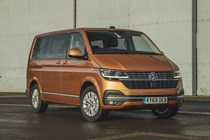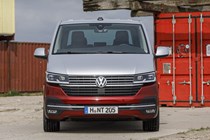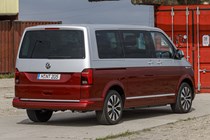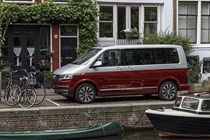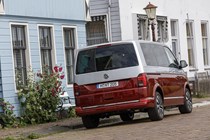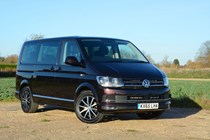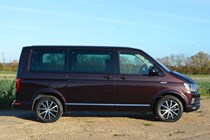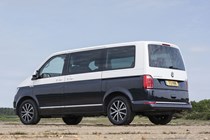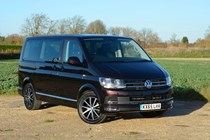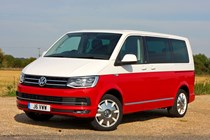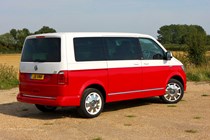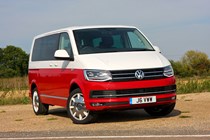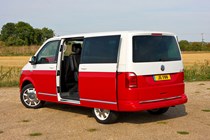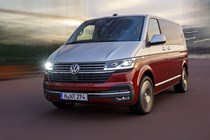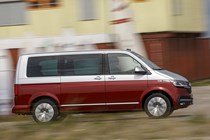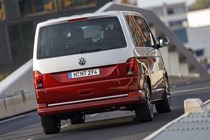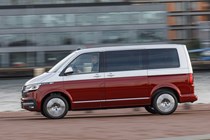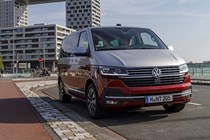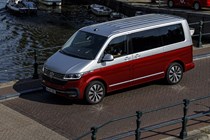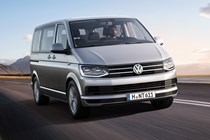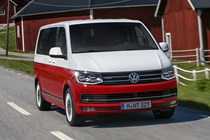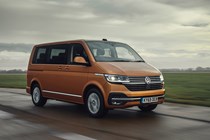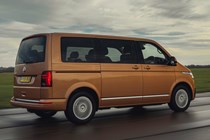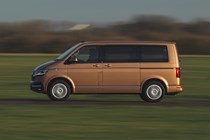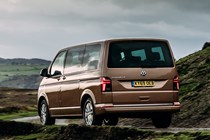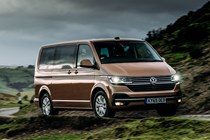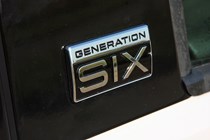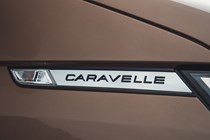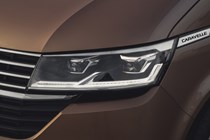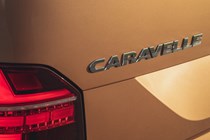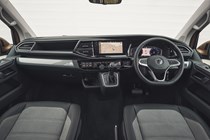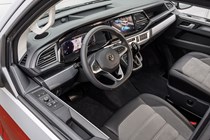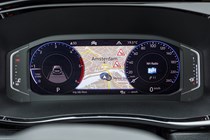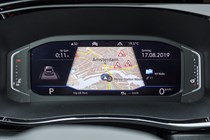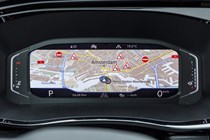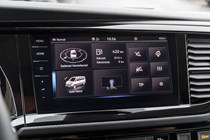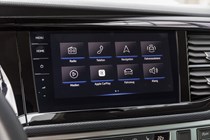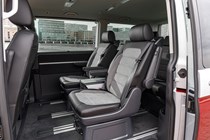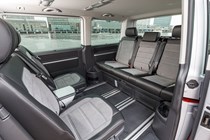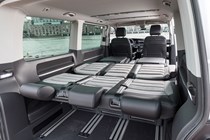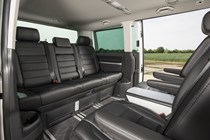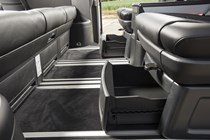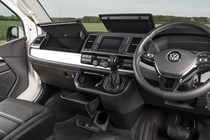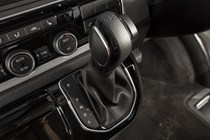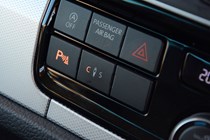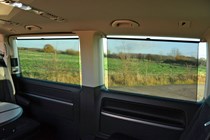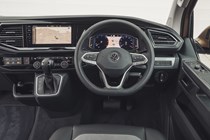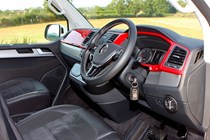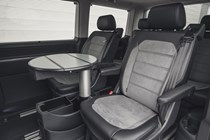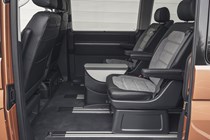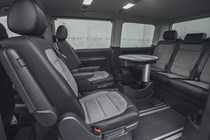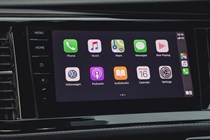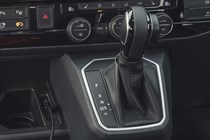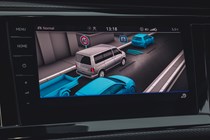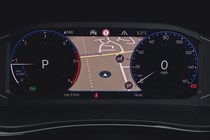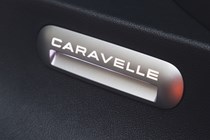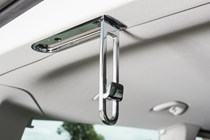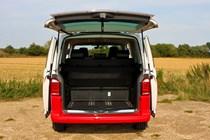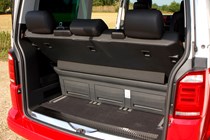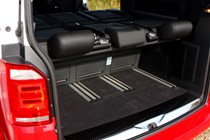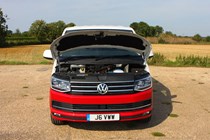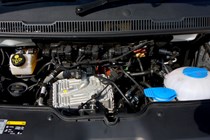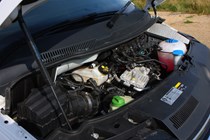
Volkswagen Caravelle Estate (2015-2022) engines, drive and performance
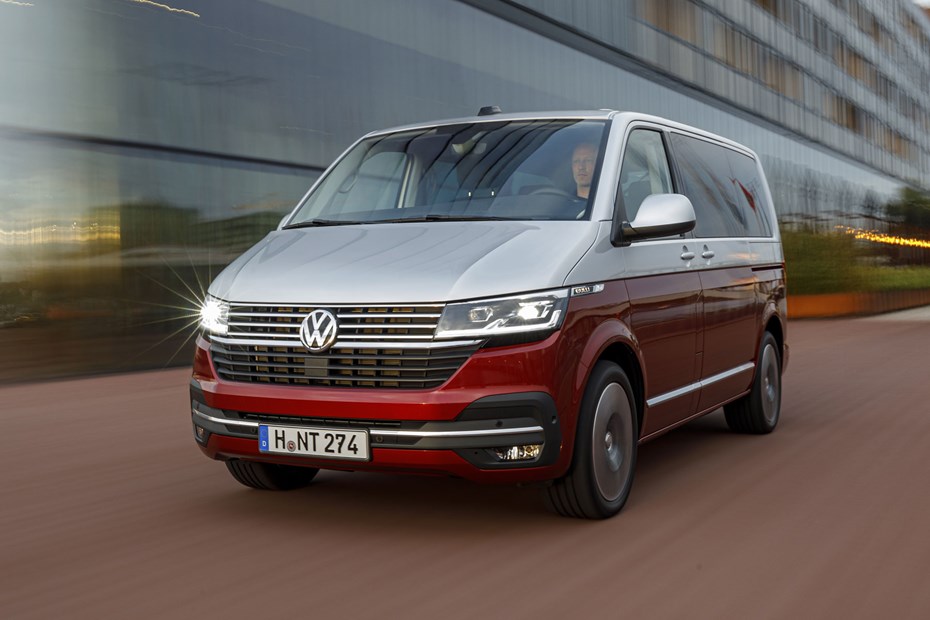
- Powerful 2.0-litre engines
- No electrification options
- Choice of auto and 4WD, though
Volkswagen has done its best to make the engine choice simple in the Caravelle: all of the engines are 2.0-litre, four-cylinder motors and there is a choice of just two power outputs.
Up until mid-2018, this choice was between 150hp and 204hp, but at this point the top spec model was downgraded slightly to 199hp, in reponse to the latest emissions standards. For 2021, the more powerful version is back up to 204hp.
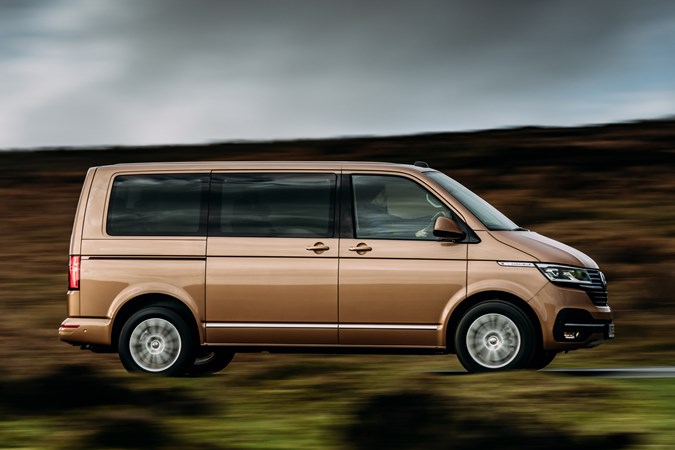
The 150hp and 204hp options applied to petrol and diesel models, though petrol-powered Caravelles were only sold in the UK from July 2017 to September 2018. Manual gearboxes were dropped at the introduction of the 6.1 facelift.
Powerful diesel engines
As well as better fuel economy, the more common diesel choices – badged TDI – also have more torque, which means they can move heavier loads with less effort.
The 150hp TDI diesel has 340Nm of torque from 1500rpm, meaning an acceptable 0-62mph time of 13.0 seconds, while the top speed is 113mph. If you’re intending to use your Caravelle mainly for urban journeys, this is fine, but on more open roads it does feel like its lacking in oomph.
Making a better fist of things is the 199hp (VW is yet to confirm figures for the latest 204hp versions), which produces a beefier 450Nm of pulling power from 1400rpm. Two turbochargers are fitted here for improved responsiveness, and it shows. As a result, the 204hp Caravelle gets going with truly surprising vigour for a vehicle of such size. The more childish will find the looks on other drivers’ faces at traffic lights very amusing.
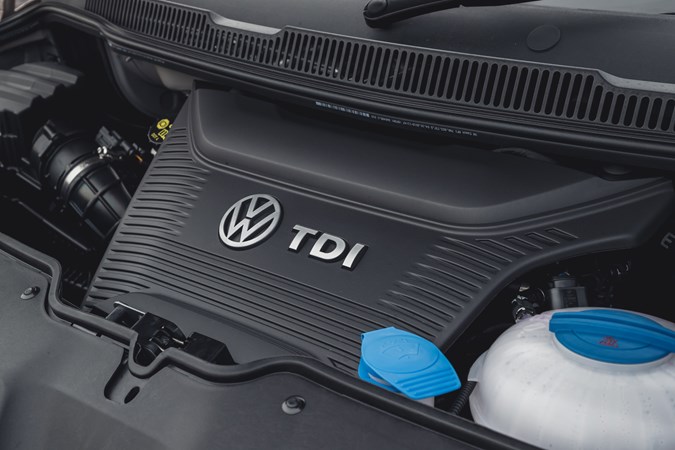
On paper, 0-62mph takes 10.1 seconds with a top speed of 124mph.
The 199hp (and 204hp) diesel is also available with 4Motion four-wheel drive, which is slightly slower still – 10.3 seconds for 0-62mph, 123mph top speed. If you are expecting to spend a lot of time on slippery surfaces (such as grass and snow), 4Motion may be worthwhile, but for most drivers the standard front-wheel drive should suffice, as it’s backed up by a full set of electronic stability control systems.
The standard DSG automatic is fine once you’re up and running, but it can feel very lethargic when pulling away from a standstill – prompting you to press down harder on the accelerator. At which point you suddenly get too much power and torque, which can often lead to wheelspin.
It very much feels like some further refinement of the calibration of this system is required.

You also have to pay extra for paddleshifters on the steering wheel, which we found we ourselves using surprisingly often to improve the engine braking in traffic on the motorway when not using the adaptive cruise control
Discontinued petrol engines
The short-lived petrol engines were cheaper to buy than the equivalent diesel engines, but less fuel efficient, and only available as short-wheelbase SE models.
The 150hp version was fitted with a manual gearbox while the 204hp engine was automatic only – 0-62mph takes 12.5 seconds in the former, 9.9 seconds in the latter.
While we haven’t sampled either engine in a Caravelle, we have tested both in the Transporter van the Caravelle is based on. Compared with the diesels they are smooth and less noisy, but suffer with a strange vibration around 1,400-1,500rpm – something the DSG transmission deals with better than the manual.
They are worth considering if you’re buying used, but only if you plan to mostly do short journeys. On longer journeys the additional fuel economy of the diesel models makes a significant difference.
Unintimidating to drive
- Driving experience is rather rewarding
- Rarely feels big and bulky to manoeuvre
- Adaptive suspension worth considering
No one buys a van-based MPV expecting it to drive like a moderately capable hatchback, let alone a sports car. But within the constraints of its tall, bulky body the Caravelle acquits itself very well.
While you’ll never escape the sensation of height, it has quite a squat, stable feel to the way it approaches corners, and it tucks into roundabouts in a manner that makes it seem almost deft. Clearly some care has been taken at Volkswagen over delivering a reasonably satisfying steer, perhaps in the knowledge that these vehicles will be used for extended journeys, often whipping passengers up and down the motorway, or off on an adventurous family holiday. Bravo to them.
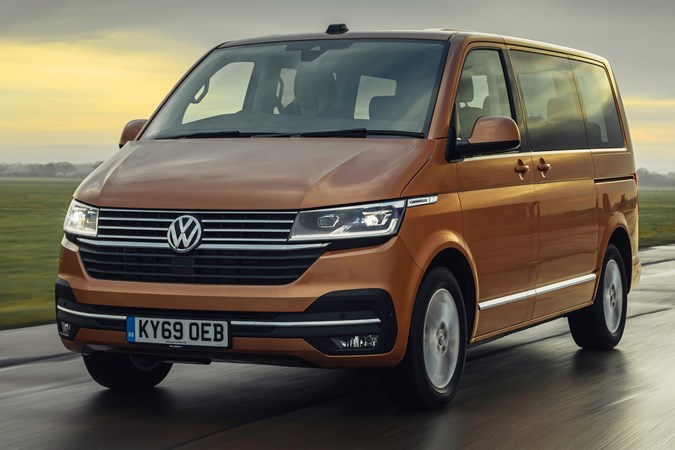
As such, the original Servotronic speed-dependent power-steering is weighty enough to make it easy to gauge the Caravelle’s responses, yet light when needed for close-quarters manoeuvring around town.
Facelifted 6.1 models take this a stage further with their newer electromechanical steering, which manages the neat trick of being super-effortless at low speeds while still delivering precision and stability when you start going faster. We like it a lot – it helps the Caravelle feel more like a car than ever from behind the wheel.
Similarly, though this big VW certainly leans more through the turns than a regular car, the bodyroll is well controlled once you get used to it and proves little cause for alarm.
Suspension upgrades
Executive specification models come with Dynamic Suspension as standard, which is 20mm lower for greater composure; this is optional on the SE.
Those looking for even more from their Caravelle were able to add Dynamic Chassis Control (DCC) – a three-stage adaptive damping system with Comfort, Normal and Sport settings. Well, it says three-stage on the screen, but each has five steps within them making 15 in total.
It’s a rare feature having been discontinued on the T6 model for UK buyers, only to be reintroduced as part of the 6.1 makeover, but in our opinion it’s worth the extra outlay. Not only does it keep body roll in check even more, it improves the ride comfort, dialling-out more asphalt imperfections and making the Caravelle a great long-distance companion for driver and passeners.
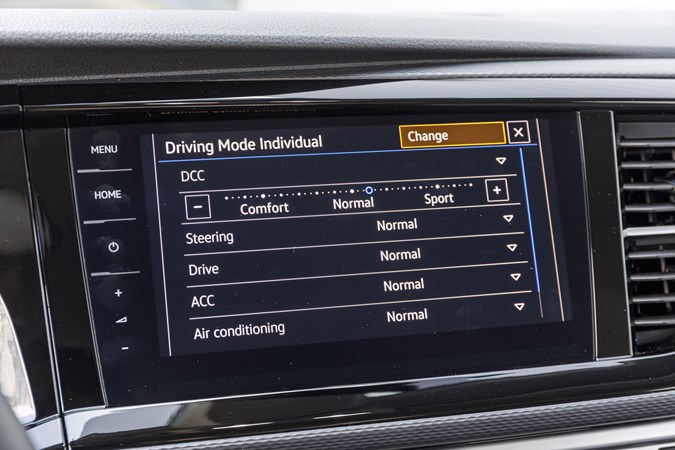
Those who do place the driving experience high up on their list of buying priorities should also consider the Ford Tourneo Custom, which also has surprisingly engaging handling for a vehicle of this type.


